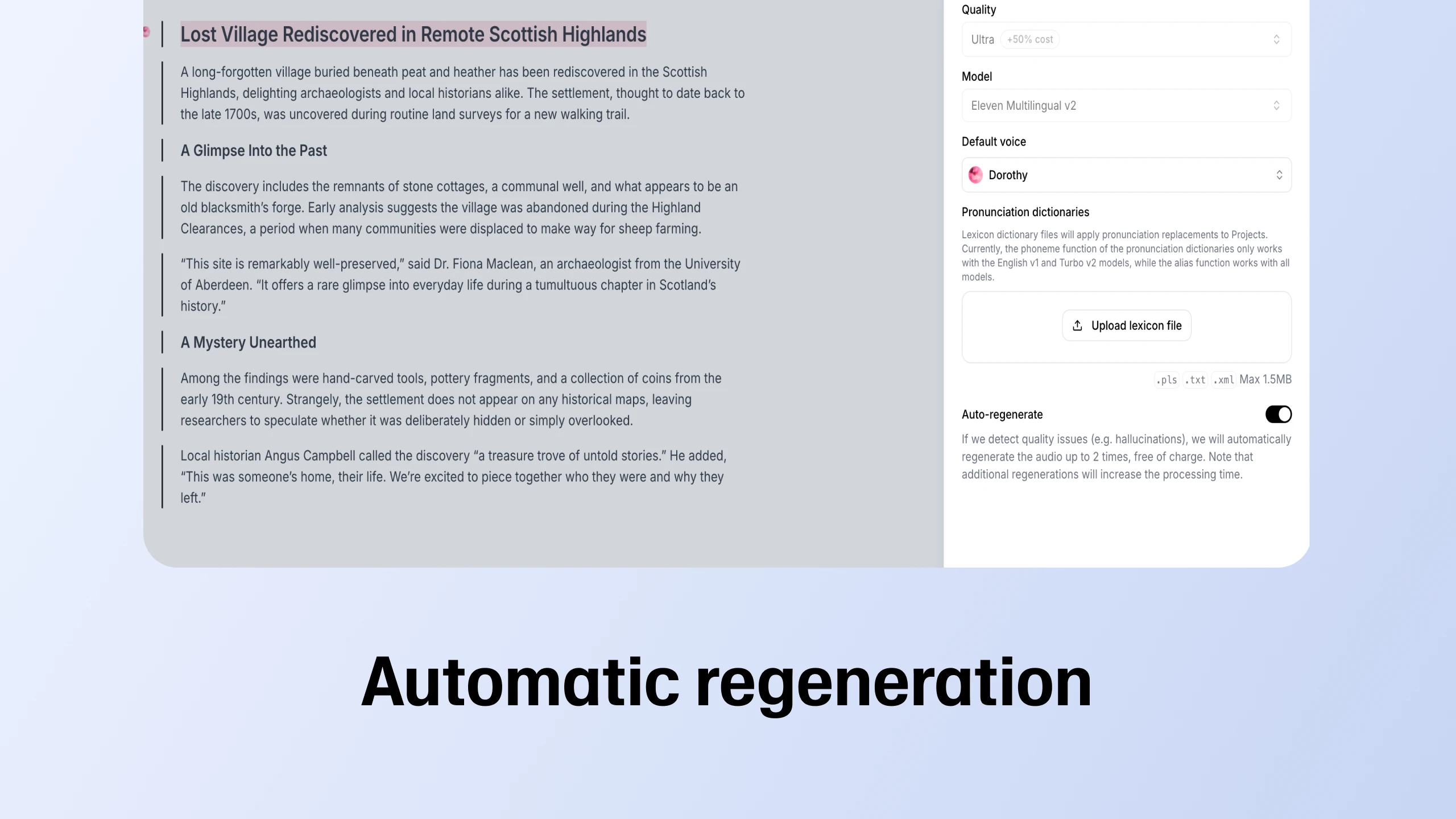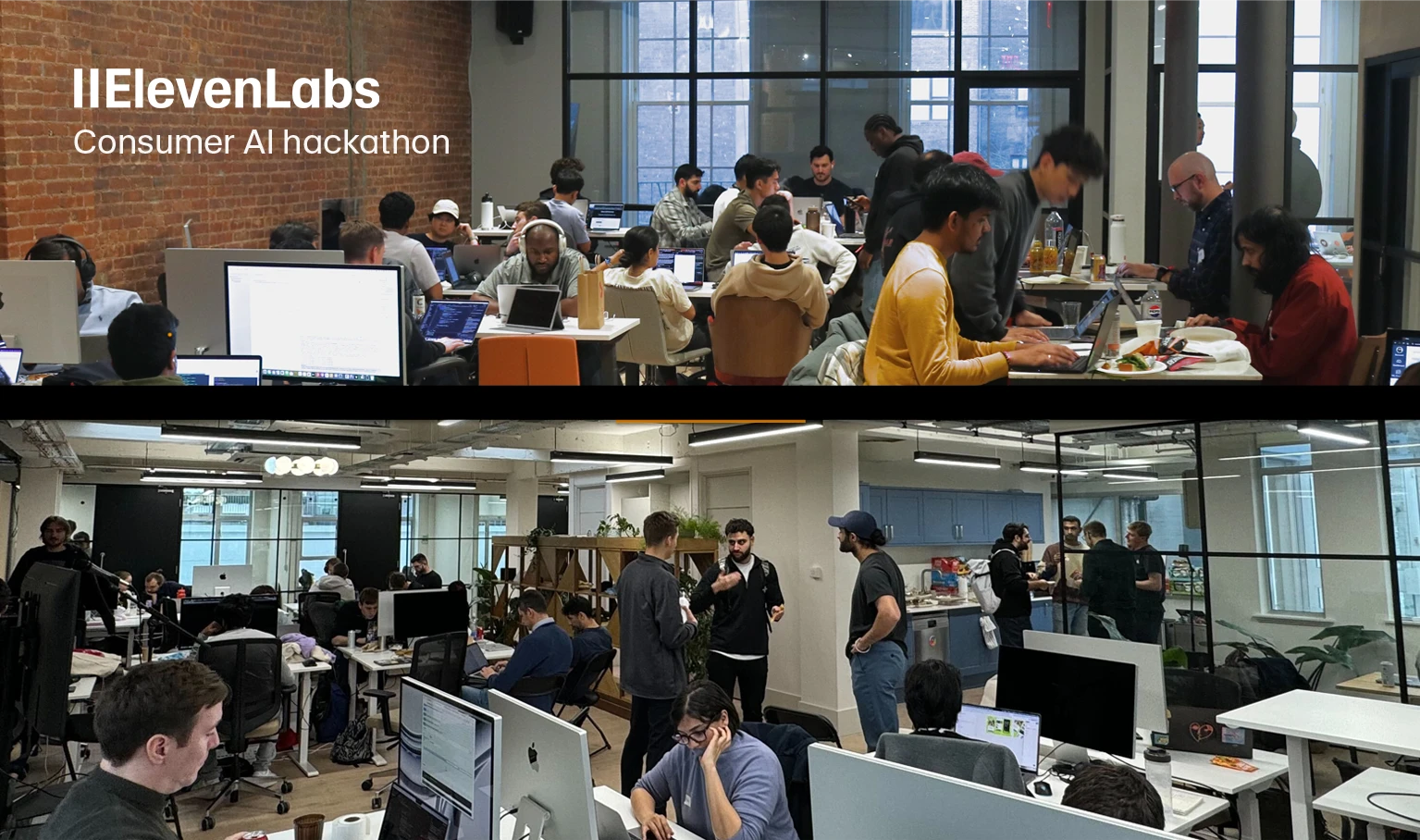
Our AI text to speech technology delivers thousands of high-quality, human-like voices in 32 languages. Whether you’re looking for a free text to speech solution or a premium voice AI service for commercial projects, our tools can meet your needs
Video game voice creation has typically been a crucial, yet time-consuming and costly, endeavor. Could AI be the answer?

Have you ever wondered what brings video game characters and NPCs to life? It's not just their stunning visual design or well-written dialogue—it's the voice acting that breathes soul into these virtual entities. In the world of video game development, creating captivating voices for characters and NPCs is an art form that can make or break a player's immersion in the game world.
Traditionally, creating captivating voices for characters and NPCs has traditionally been a time-consuming and resource-intensive process. However, with the advent of AI voice creation tools, the landscape of voice acting in video games is undergoing a dramatic transformation.
These innovative solutions, such as ElevenLabs' text-to-speech tool, are revolutionizing the way developers approach voice acting, making the process easier, faster, and more cost-effective than ever before.
In this blog post, we'll compare how video game developers have historically created voices for video game characters before comparing this to the new, AI-powered future.

Creating authentic and engaging voices for video game characters and NPCs (Non-Player Characters) has always been a critical aspect of game development. Traditionally, this process involved several meticulous steps to ensure the characters' voices were not only distinctive but also conveyed the right emotions and personalities to enhance the gaming experience. Let's delve into the traditional steps involved in this intricate process.
The first step involved in creating voices for video game characters is comprehensive character development and scriptwriting. Developers and writers collaborate to craft detailed character profiles, outlining their backstories, personalities, and roles within the game's narrative. Based on these profiles, writers then create scripts that dictate the dialogue and vocal interactions between characters, ensuring each line reflects the character's personality and the game's context.
Once the characters and scripts are finalized, the next step is casting voice actors who can bring these characters to life. This involves auditioning several actors to find voices that match the developers' vision for each character. Casting decisions are critical, as the chosen voice actors must be capable of delivering performances that align with the characters' personalities and the emotional tone of the game.
With voice actors selected, the recording process begins. This typically takes place in a professional sound studio, where actors perform their lines under the direction of voice directors. These sessions are crucial for capturing the nuanced performances required for the game, with directors guiding actors through multiple takes to achieve the desired emotional depth and character authenticity.
After recording, the raw audio undergoes extensive editing and post-production to refine the performances and integrate them seamlessly into the game. This includes cleaning up the audio, removing any unwanted noises, and adjusting levels for clarity and consistency. Sound designers may also add effects to the voices, such as echoes or modulation, to fit specific characters or environments within the game.
The final step involves integrating the edited voice recordings into the game. This requires careful synchronization of audio with game animations and actions, ensuring that voice lines play at the appropriate moments. Sound engineers and developers work closely to implement dynamic audio systems that can adapt the dialogue and vocal expressions based on player interactions and game events.
Traditionally, creating voices for video game characters and NPCs was a complex, collaborative process that demanded significant time, resources, and expertise. From character development to final integration, each step was crucial for producing compelling and immersive vocal performances that contributed to the overall narrative and emotional impact of the game.
While using actors to create voices for video game characters and NPCs has been the standard approach, it presents several challenges that can impact the development process and the final quality of the game. These challenges stem from logistical, financial, and creative aspects of voice production. Let's explore the key hurdles developers face in this traditional method.
One of the most significant challenges is the high cost associated with hiring voice actors, especially if the game requires a diverse cast or well-known talent to attract attention. Beyond the actors' fees, the expenses include studio time for recording, sound engineers, and voice directors. These costs can be prohibitive for smaller studios or indie developers, limiting their ability to create rich, voiced content for their games.
Coordinating the schedules of voice actors, directors, and studio availability is another major hurdle. Delays can occur if key actors are unavailable when needed, potentially pushing back the game's production schedule. Additionally, the logistics of bringing together a large cast, especially for games with extensive dialogue, can be daunting and time-consuming.
Maintaining consistency in voice performances throughout the game is challenging, particularly for long-term projects or series with multiple installments. Changes in actors' voices over time or their availability can lead to inconsistencies in character portrayal, impacting the player's immersion and connection to the characters.
Relying on human actors can sometimes limit the range of voices and sounds that can be produced, especially for characters that are non-human or require unique vocal traits. Achieving the desired vocal effects may require extensive post-production work, which can be costly and technically challenging.
Localizing voice content for different markets is a complex and expensive process that involves re-casting, re-recording, and re-integrating voices for each language. This challenge is compounded by the need to ensure that performances are culturally appropriate and resonate with the target audience. Additionally, providing accessible content for players with hearing disabilities requires extra resources for subtitles and visual aids, further increasing production complexity.
For games that continue to evolve post-release through updates or downloadable content (DLC), securing the original voice cast for new voice lines can be difficult. Actors may be unavailable or demand higher fees, complicating the continuity and coherence of the game's voice content.
Using actors to create voices for video game characters and NPCs, while offering authenticity and emotional depth, presents a complex array of challenges. These issues highlight the need for innovative solutions that can alleviate the logistical, financial, and creative constraints of traditional voice production methods.

The landscape of voice creation for video game characters and NPCs is undergoing a transformative shift with the advent of AI tools. These innovative solutions, such as those developed by ElevenLabs, are reshaping the traditional methodologies, offering game developers new avenues for creativity and efficiency.
Here's how you can use AI tools to give your video game characters a voice—quicker, cheaper, and easier than ever before.
ElevenLabs's Voice Library, a comprehensive collection of high-quality AI voices, is a game-changer for video game developers. This platform allows developers to explore a vast array of vocal styles, from audiobook narrators to unique characters, ensuring the perfect fit for any game's narrative needs.
The Voice Library is designed to simplify the discovery process, providing detailed descriptions, advanced metadata, and usage statistics to inform developers' choices.
At the heart of this innovation is the Voice Design tool, enabling the creation of synthetic voices based on selected parameters such as age, gender, and accent. This feature ensures each voice is unique, crisp, and lifelike, broadening the creative palette for developers.
The tool's integration with ElevenLabs' multilingual model further enhances its utility, allowing voices to maintain their distinctive qualities across various languages. This cross-language consistency is vital for games aiming for a global audience.
ElevenLabs' Text to Speech technology stands out by offering an indistinguishable-from-human speech output, supporting 29 languages and a plethora of voices. This tool allows for precision tuning of voice outputs, providing developers with the flexibility to adjust vocal qualities to match their specific needs.
The result is lifelike spoken audio that can enliven character dialogues and narrative elements within games, making every interaction more engaging and realistic.
A key feature of ElevenLabs' approach is the emphasis on community and sharing. Developers can not only discover and utilize voices from the Voice Library but also contribute their own creations.
This community-driven aspect fosters a collaborative environment where developers can access a diverse range of voices and even earn rewards when their voices are used by others. The ecosystem not only accelerates the development process but also enriches the gaming experience with a wide variety of vocal expressions.

Our AI text to speech technology delivers thousands of high-quality, human-like voices in 32 languages. Whether you’re looking for a free text to speech solution or a premium voice AI service for commercial projects, our tools can meet your needs
The adoption of AI voice creation technologies is revolutionizing the way voices are produced for video game characters and NPCs. This method, propelled by platforms such as ElevenLabs, offers several key advantages that enhance the game development process and the end-user experience.
AI voice creation tools grant developers unparalleled creative freedom. With the ability to generate voices across a spectrum of ages, genders, accents, and even non-human sounds, developers can truly bring their characters to life in ways that were previously unattainable. This diversity allows for a more immersive and engaging game world that resonates with a wider audience.
One of the most significant benefits of AI voice creation is the dramatic reduction in time and resources required to produce high-quality voice content. Unlike traditional voice recording, which involves coordinating with voice actors and managing recording sessions, AI voice creation can generate vast amounts of dialogue quickly and easily. This efficiency accelerates the development cycle, allowing for more focus on other aspects of game creation.
AI voice creation offers a cost-effective solution for developers. By eliminating the need for hiring multiple voice actors and booking studio time, developers can significantly reduce the expenses associated with voice production. This is particularly beneficial for indie developers and smaller studios that operate with limited budgets, enabling them to include high-quality voice acting in their games without compromising on other development costs.
The scalability of AI voice creation tools means that developers can produce as many or as few voice lines as needed, adjusting easily to the scope of their projects. This flexibility supports dynamic content creation, such as adding new dialogues for game updates or expansions, without the logistical challenges of re-engaging voice actors.
With support for multiple languages, AI voice creation tools make localizing games for different markets more accessible. Developers can create voice content in various languages without needing to find and hire native speakers for each one. This global reach enhances the game's appeal to international audiences, contributing to wider adoption and success.
AI-generated voices maintain consistent quality and performance, ensuring that every line of dialogue matches the desired tone and emotion. This consistency is crucial for maintaining immersion and narrative coherence throughout the game, providing players with a seamless and engaging experience.
Incorporating AI voice creation into the game development process not only addresses the challenges of traditional voice production but also opens new creative possibilities. By leveraging the capabilities of platforms like ElevenLabs, developers can enhance the narrative depth and emotional engagement of their games, setting new standards for storytelling and character development in the gaming industry.

Paradox Interactive, a leading Swedish game developer, significantly streamlined their voice generation process from weeks to hours by integrating ElevenLabs' advanced voice technology.
This collaboration facilitated efficient narrative iterations, substantial cost savings, flexible localization across languages, improved game accessibility, and the creation of new narratives and expansions. The use of ElevenLabs' text-to-speech technology enabled Paradox to rapidly prototype voiceover content, achieving high-quality results that exceeded expectations and opened new possibilities for voiceover design in their games.
According to Ernesto Lopez, Audio Director for Stellaris and CK3: “We’re incredibly pleased with the results from the ElevenLabs platform. We were looking for a solution that could enable us to prototype voiceover content for our games, and the samples created by their contextually aware engine have exceeded our expectations."
As the video game industry continues to evolve, the integration of AI voice creation tools represents a significant leap forward, transforming how developers bring characters and NPCs to life. The traditional challenges of voice production—cost, time, and logistical complexity—are being replaced by an era of boundless creative possibilities, efficiency, and accessibility. The advancements in AI technology not only streamline the voice creation process but also open up new avenues for narrative depth and character development, enhancing the immersive experience that gamers seek.
ElevenLabs stands at the forefront of this revolution, offering a comprehensive suite of tools designed specifically for video game developers. From the Voice Library's vast collection of AI-generated voices to the Voice Design tool's ability to create custom voices tailored to specific characters, ElevenLabs is equipping developers with the resources they need to redefine the auditory landscape of their games. Moreover, its text-to-speech technology ensures that dynamic dialogue and narrative elements are more engaging and realistic than ever before.
Whether you're an indie game developer or a large studio, sign up for ElevenLabs today and discover how its suite of tools can elevate your games.

Our AI text to speech technology delivers thousands of high-quality, human-like voices in 32 languages. Whether you’re looking for a free text to speech solution or a premium voice AI service for commercial projects, our tools can meet your needs

Our long form text editor now lets you regenerate faulty fragments, adjust playback speed, and provide quality feedback

Developers brought ideas to life using AI, from real time voice commands to custom storytelling